| Columns Retired Columns & Blogs |
Have you tested the the iOS-based RPM app from iTunes with the now discontinued Feickert app for speed accuracy?
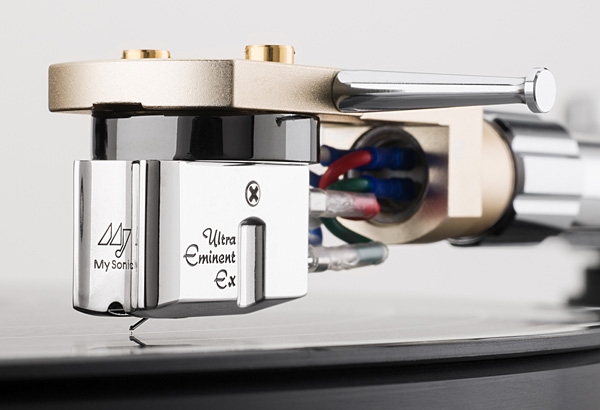
When I push one of the Blackbird's three speed buttons, to select 78, 45, or 331/3rpm, the annoying light goes out—but I then have to move the tiddledywink to cover the equally bright speed-indicator light. A small inconvenience, and, gratefully, the only unpleasantness I experienced during my time with Dr. Christian Feickert's middle-priced turntable ($6995, turntable only).
My enchantment with the Blackbird began the moment I slit the tape on its double boxes and looked inside. Immediately I spotted the new 12" Jelco TK-850L tonearm, which I'd been yearning to audition ever since I learned that it has a knife-edge vertical bearing like that in vintage SME arms.
The first separate tonearm I ever purchased was an SME 3009 Series II. Many years of my record-playing life were well spent watching this oh, so British 9" arm steer Shure's high-compliance (22.5 x 10–6cm/dyne) V15 Type III moving-magnet phono cartridge, a combination I still recommend.
The second tonearm I ever bought was a 12" SME 3012 made in 1958. I used it on a Thorens TD 124 turntable until I discovered Sumiko's MDC-800 The Arm, which steered my beloved Koetsu Rosewood Signature cartridge to spectacular musicality.
I loved and admired the MDC-800 until someone gave me a Fidelity Research FR64S arm, which became an even bigger love. The FR64S had an effective mass of 35gm (!) and worked even better with low-compliance moving-coils like the Koetsu Rosewood, the Audio Note Io II, and the Denon DL-103.
Between the SME 3012 and Sumiko MDC-800 I briefly owned a SOTA Sapphire turntable. Even with the Koetsu, it made me yawn. It was equipped with a Jelco-manufactured Sumiko MMT arm that, sonically, seemed a little nonrigid/plain vanilla with high- or low-compliance cartridges.
Historically, audiophiles on a budget who value pace, rhythm, and timing (PRaT), as well as dynamics, choose rigid tonearms from Rega Research. Audiophiles on a budget who enjoy experimenting with cartridges (as I do) choose an easily adjustable Jelco or SME 3000-series arm with a removable headshell (as I often have).
I began this report with a strong hope this new 12" Jelco arm, with its knife-edge vertical bearing and no fluid damping, might light up and PRaT-boogie my music better than its predecessors.
Setting up the Blackbird
Unpacking and setting up the Blackbird was so simple and so enjoyable that now, every time I put a record on, I pause to admire Dr. Feickert's conspicuously high engineering IQ (footnote 1).
The Blackbird's industrial- but elegant-looking aluminum-MDF-aluminum-sandwich plinth sits on three footer pucks that can be adjusted to level its 13.23-lb, 42mm-thick polyoxymethylene (POM, aka Delrin) platter.
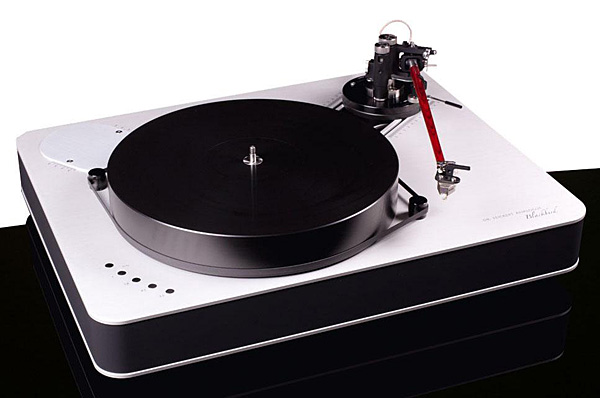
Before I installed the Blackbird's flat, 4mm-wide drive belt of nitrile butadiene rubber, I thought I'd disperse the drops of bearing oil I'd just squeezed onto the thick shaft of the platter's inverted bearing by giving the platter a spin with my hand. When I did, I gasped: This platter spins so easily, it might never stop! Using a stroboscope disc and the stopwatch on my iPhone, I measured an extremely good 33-to-0rpm rundown time of 3 minutes and 28.76 seconds.
Some folks say that timing a turntable platter's rundown is an irrelevant audiophile parlor trick. They claim that all that matters is bearing noise, which can be detected with a stethoscope. But my experience reviewing the Palmer 2.5 turntable for the July 2017 issue taught me that the bearing does not exist in isolation—nothing on a turntable does. The bearing is connected directly or indirectly to the motor, the plinth, the platter, and the tonearm. On all turntables, how effectively and quietly the motor turns the platter is directly related to bearing friction and bearing-gap tolerances. As I know from experience, turntables with high-mass platters, very low-friction bearings, and low-torque motors give music playback a stable, deep quietness and a weighty "dark force" sense of momentum that I cherish.
The Feickert Blackbird has two high-torque, brushless three-phase motors made by Pabst. Each of the several Voyd TT3 turntables I've owned had three high-torque Pabst motors, as does Feickert's flagship model, the Firebird ($12,500). Feickert's starter model, the Woodpecker ($4995), has only one motor. All three Feickerts have the same Delrin platter, distinguished by its eight eye-catching and inertia-enhancing machined-brass inserts.
I wondered how much of the Blackbird's two-motor high torque translated into noise. With the belt still unattached and the motors switched on, I applied my stethoscope first to plinth, an inch from the right-side motor. I heard near silence—only a faint sense of an infinitesimally tiny motor running far away. It was much quieter than any other solid-plinth turntable I've listened to. Next, I placed the stethoscope's diaphragm directly on the flat top of the Jelco tonearm's bearing assembly with the motor still running. It, too, seemed nearly silent. Impressed, I put the 'scope on the record spindle. Again, the tiny sound of a distant motor.
After attaching the belt, I used the iOS-based RPM app from iTunes to measure the Blackbird's speed. It measured 33.3rpm/–0.09% (fig.1) Very impressive, but . . .
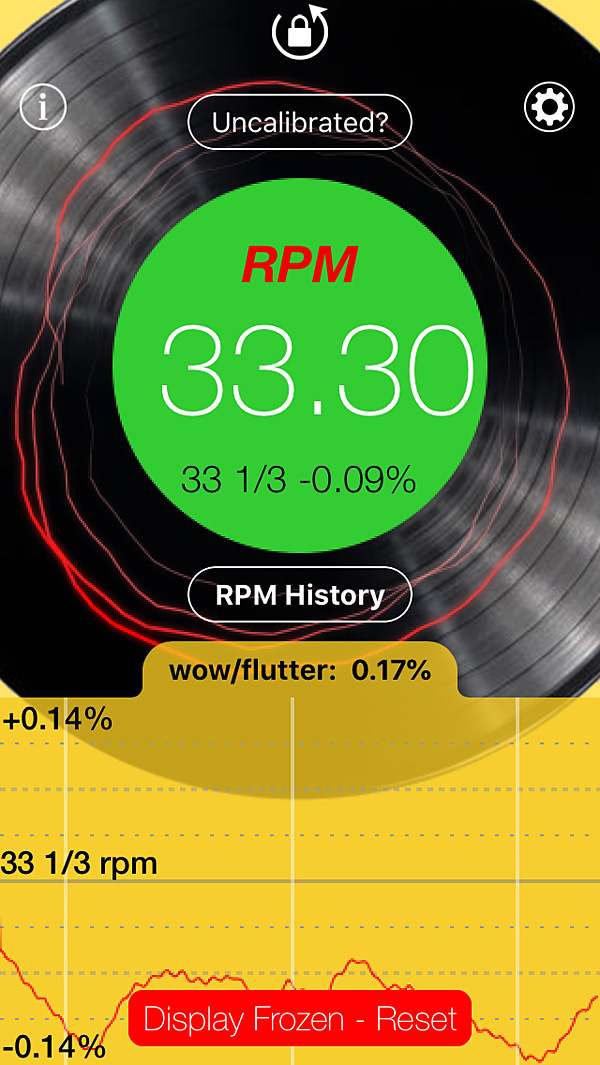
The real wonderment of the Feickert Blackbird was how easy it was to install the Jelco TK-850L arm. I simply bolted the arm's base to the dual stacked Feickert arm-mount discs, which fitted snugly and bolted easily into a calibrated, lozenge-shaped cutout in the plinth's right-rear corner. Before tightening these bolts, the user must align a scribed vertical indicator line on the bottom arm-mount disc with the number along the edge of the cutout that corresponds to the tonearm's specified spindle-to-pivot distance.
I threaded the tonearm cable (not provided) from the bottom of the plinth and up through the tonearm base, then attached cable to arm, dropped the arm into its base, and locked it tight with its single setscrew (footnote 2).
My introduction to Dr. Feickert Analogue products began years ago, when I purchased Feickert's sturdy aluminum cartridge-alignment protractor. Now, I'm pleased to announce that all Dr. Feickert turntables come with a simpler, more ingenious version of that fine protractor—one that will last forever, and makes installing cartridges completely straightforward.
Setting up the Blackbird revealed a precision German-made machine that is extraordinarily well conceived and executed. Even before I played one record on the Blackbird, I wanted to own it.
Koetsu Rosewood Signature Platinum cartridge
My first-ever wizard-hero of hi-fi was the late Yoshiaki Sugano (1907–2002). Sugano wedded art and beauty to the mundane realm of audio engineering in an unprecedented way. To acknowledge this marriage, he named his groundbreaking cartridge-making enterprise for the Japanese artist, poet, lacquerer, and calligrapher Hon'ami Koetsu (1558–1637). To me, Sugano-san's original Rosewood Signature moving-coil cartridge established the tone and tenor of expensive hi-fi's last real Golden Age (1975–1985). The new Rosewood Signature Platinum is designed by Koetsu's son, Fumihiko Sugano.
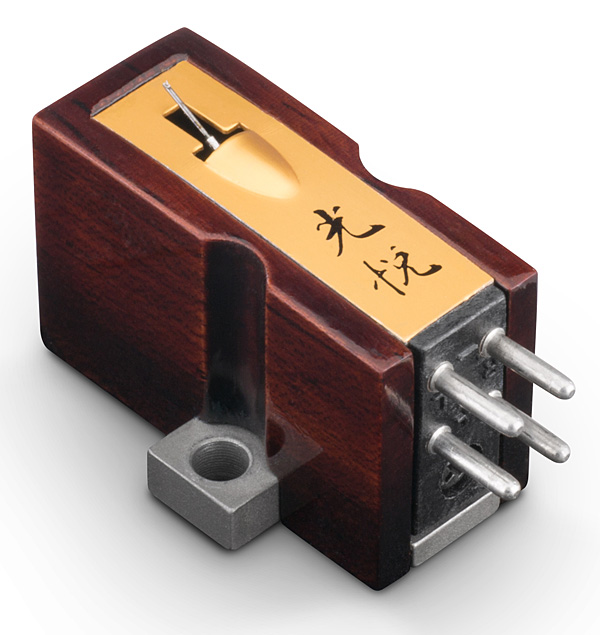
I installed the Koetsu Rosewood Signature Platinum ($7495) in the removable headshell of the Jelco TK-850L that came with the Feickert Blackbird, and directed its output to Parasound's John Curl-designed Halo JC3+ phono preamplifier ($2995), which has served me quietly and musically since I began writing for Stereophile. The Halo JC 3+'s sound is gentle and finely detailed, with touches of softness in the bass and extreme treble—but when set to load the expensive Rosewood Platinum Signature at 100 ohms, the result was an exceedingly rich and unaffected sound. The combo allowed baritone Bruno Laplante and pianist Janine Lachance to sound as if they were giving a real recital in a real recital hall in their recording of Reynaldo Hahn's song cycle Mélodies Vol.2 (LP, Calliope CAL 1840). I could sense the polished wood floors and room parameters.
When my hi-fi shows me the dimensions and feel of a recital hall, I know I'm listening to vinyl tracked by a fine MC. This Koetsu, with its lacquered rosewood body, silver-plated copper coils, quadrahedral stylus profile, boron cantilever, and platinum magnet, gave me a sixth-row seat for this long-cherished recording.
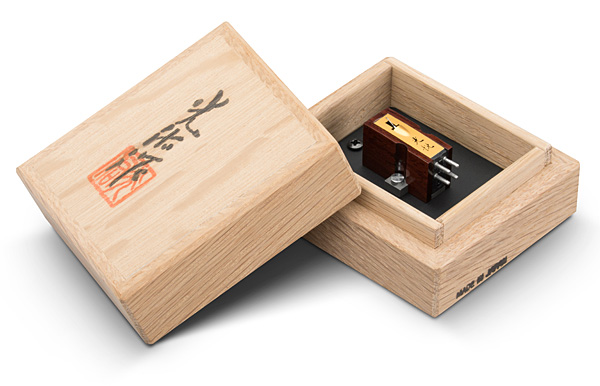
Lately, I've been playing this game with myself where I watch my brain and notice how long I can stay 100% focused and locked in to whatever music I'm listening to. I search for tempos and melodies, rhythm changes, nuanced shifts of key or beat. I examine the sentiment of the piece. With digital, I doubt I've lasted an entire minute without drifting into some distracted nonmusical thought.
In contrast, the Rosewood Signature Platinum seemed engineered to do nothing but hold my attention—my pleasurable fascination—as it showed me the art behind the music. More than any other brand of cartridge I know, Koetsu delivers intangibles. Koetsu cartridges don't simply resolve data; they parlay their exceptional retrieval of information into mesmerizing experiences for the listener. Holding a listener's attention is their main game, and I love playing it.
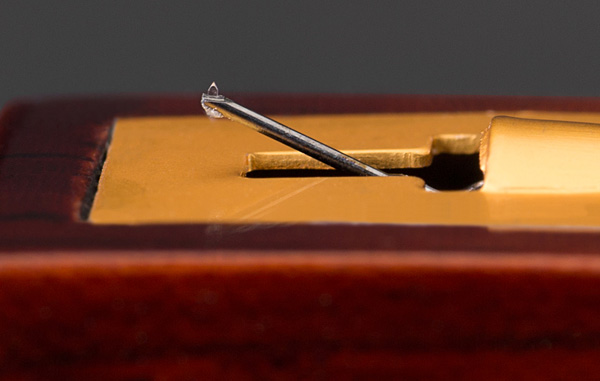
The Rosewood Signature Platinum has the same output (0.3mV), dynamic compliance (5 x 10–6cm/dyne), and internal impedance (5 ohms) as other Koetsu cartridges. Koetsu still recommends a low loading of 30 ohms, and fanatics still debate the best loading. In my time with Koetsus I've come to favor 80–100 ohms. Both the standard Rosewood Standard and the Rosewood Signature Platinum sounded the most tactile and three-dimensional when driving my high-nickel-content EMIA step-up transformer ($2400); but I did most of my listening with Tavish Design's Adagio tubed phono stage ($1790), set to 100 ohms.
Footnote 2: I tried a few of the dozen phono cables in my tonearm box, and ended up using the same AMG Reference cable ($1500) I use with the AMG G9 turntable-tonearm combination.

... the following article was written that might make a MC cartridge seem - in HR's opinion - to provide a closer approximation to the sound of the master tape than a MM cartridge?
http://www.regonaudio.com/Stanton881AudioTechnicaATML70.html
Recall that AR once determined that LP playback via a Shure V15 Type IV (MM type) cartridge resulted in sound quality most closely approximating that of the master tape.

Herb,
I have read your rejection of the Sota Sapphile/Sumiko MMT combination a few times. As the almost 30 year owner of what is probably a contemporary Sota/MMT turntable it makes me sad. However it also makes me a bit upset as people may not consider a beautiful turntable based on your comments.
I did go many years thinking it was a good, if not great combination, but two changes I have made in the last couple years has made me totally realize where the weaknesses are - and it isn't with the basic turntable or tonearm.
My first improvement was changing the stock phono cable with a Kimber TAK model. The sound which had been very detailed and a bit lacking in fullness was changed to a much more musical tone.
But what made the biggest change - and where I think the Series III Sapphire was most lacking - was in the armboard. I found a acrylic/aluminum Sota armboard that was drilled for my arm online for a good price. When I moved the arm to the new board - double checking the pivot to spindle distance which was slightly off on the original mounting and re-balancing the table for the heavier board - the first notes were a revelation. Percussion was MUCH tighter, all sounds had much more ease to them, and I even think the speed accuracy was improved.
The biggest drawback to the tables of that era was the press board armboard. And either of the new improved armboards can be retrofitted to any Sota Sapphire and up turntable.
Stereophile has not reviewed a Sota product in some time and it is no longer on your recommended list. With the new Series VI coming out soon, I think it would be a good time to re-introduce your readers to the current performance level of Sota turntables.
Matt

The Halo JC 3+'s sound is gentle and finely detailed, with touches of softness in the bass and extreme treble—but when set to load the expensive Rosewood Platinum Signature at 100 ohms, the result was an exceedingly rich and unaffected sound. The combo allowed baritone Bruno Laplante and pianist Janine Lachance to sound as if they were giving a real recital in a real recital hall in their recording of Reynaldo Hahn's song cycle Mélodies Vol.2 (LP, Calliope CAL 1840). I could sense the polished wood floors and room parameters. https://www.psiphon.onl